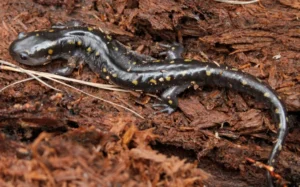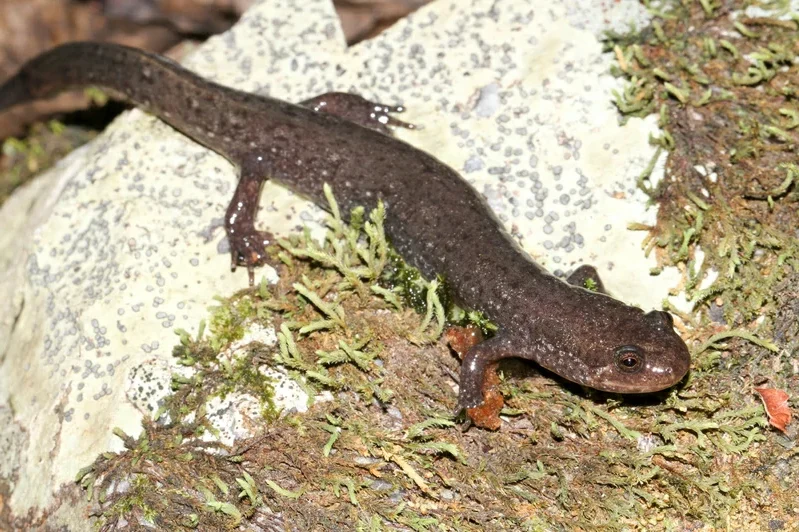Salamanders are amazing animals that live all around us. Many people wonder if these creatures die after they have babies. This is a good question that shows how much we want to learn about nature. The answer might surprise you.
Most salamanders do not die after giving birth or laying eggs. Unlike some animals that only reproduce once, salamanders can have babies many times throughout their lives. They are made to live on and keep their species going.
How Salamanders Live
Salamanders need to stay wet to survive. Their skin is very thin and lets water pass through it. This is how they breathe. They take in air through their skin just like we breathe through our lungs. This is why you often find salamanders in wet places like under logs, rocks, or near streams.
These animals are very good at hiding. During the day, they stay under things where it is dark and damp. At night, they come out to look for food. They eat small bugs, worms, and other tiny creatures.
Salamanders are also very good at growing back parts of their body. If a bird grabs a salamander’s tail, the tail will break off.
This lets the salamander escape. Later, it will grow a new tail. This amazing ability helps them survive in nature.
How Salamanders Grow
Salamanders have a very interesting life cycle. It starts when they are eggs. Most salamanders lay their eggs in water or in very wet places. The eggs are soft and clear, like tiny jelly balls.
After some time, baby salamanders hatch from the eggs. These babies are called larvae. They look different from adult salamanders.
Many larvae have gills like fish. These gills help them breathe underwater. The larvae also have fins on their tails to help them swim.

As the larvae grow bigger, they start to change. This change is called metamorphosis. Their gills disappear, and they develop lungs. Their fins also go away. Some salamanders keep their gills even when they become adults. Scientists call these neotenic salamanders.
Not all salamanders go through this water stage. Some types lay their eggs on land. Their babies look like tiny versions of their parents when they hatch.
How Salamanders Have Babies
When salamanders are ready to have babies, they look for a mate. The male and female salamanders do special dances together. They also use smells to talk to each other. This helps them find the right partner.
Most salamanders lay eggs. The female finds a safe, wet place to put her eggs. She might choose a spot under a rock in a stream or in a pile of wet leaves. Some salamanders can lay just a few eggs. Others can lay hundreds.
A few types of salamanders do not lay eggs. Instead, they give birth to live babies. These babies are born ready to live on their own. This is not very common, but it does happen in some species.
After the female lays her eggs or has her babies, something very important happens. Many people think the mother salamander dies right away. But this is not true for most salamanders.
Do They Die After Having Babies?
Here comes the answer to our main question. Most salamanders do not die after they have babies. This is different from some other animals. For example, some spiders and fish die right after they reproduce. But salamanders are built to live longer.
Scientists have a special word for animals that can have babies more than once. They call them iteroparous. This means they can reproduce many times during their lives. Most salamanders are iteroparous animals.

Female salamanders often take care of their eggs after laying them. They stay close to protect them from other animals that might want to eat them. The mother also keeps the eggs moist so they can develop properly. She does this without getting sick or dying.
Many salamanders live for several years. During this time, they can have babies multiple times. Some salamanders can live for 10 years or more. This gives them many chances to reproduce and help their species survive.
When Salamanders Might Die After Reproduction
While most salamanders survive after having babies, some do die. But this death is not planned or normal. It happens because of problems in their environment.
Sometimes, a female salamander becomes very weak after laying eggs. This can happen if there is not enough food around. It can also happen if the weather is too hot or too cold. When salamanders are weak, they cannot protect themselves well. This makes it easier for other animals to catch and eat them.
Pollution can also cause problems for salamanders. Their thin skin absorbs chemicals from the environment. These chemicals can make them sick. If a salamander is already weak from reproduction, pollution can make things worse.
Changes in their habitat can also be dangerous. When people build houses or roads, they destroy the places where salamanders live. This forces salamanders to look for new homes. This extra stress can be too much for a salamander that just had babies.
What Affects How Long Salamanders Live
Many things can change how long a salamander lives. The most important thing is having a good home. Salamanders need places that stay moist all the time. They also need plenty of food and places to hide.
Climate change is making life harder for salamanders. As the world gets warmer, some places are becoming too dry. Salamanders cannot live in places that are too dry. They need to find new homes or they will die.
The quality of water is also very important. Salamanders often lay their eggs in water. If the water is dirty or has chemicals in it, the eggs might not hatch. The babies that do hatch might be sick or weak.
Other animals can also affect salamander survival. Birds, snakes, and fish all eat salamanders. Areas with too many predators can be dangerous for salamanders. They need places where they can hide safely.
How Salamander Mothers Care for Their Young
One of the most interesting things about salamanders is how some mothers take care of their babies. This is called parental care. Not all animals do this, but many salamanders do.
After laying eggs, some salamander mothers stay with them. They coil their bodies around the eggs to keep them safe. They also keep the eggs moist with their bodies. If a predator comes near, the mother will try to scare it away.
This care does not hurt the mother salamander. She can do this job and still stay healthy. After the babies hatch, the mother often continues to protect them for a while. This gives the young salamanders a better chance to survive.
Some salamander fathers also help take care of eggs. They take turns with the mother to watch over them. This teamwork helps more babies survive to become adults.
Conclusion
The main point is clear: most salamanders do not die after having babies. They are built to live for several years and reproduce multiple times. This helps their species survive and grow.
When salamanders do die after reproduction, it is usually because of outside problems. These might include lack of food, pollution, or habitat loss. These deaths are not a normal part of their life cycle.
Female salamanders often care for their eggs and young without any harm to themselves. This parental care helps more babies survive. Many mothers will go on to have more babies in future years.
The survival of salamanders depends on many factors. The most important are having clean water, good food sources, and safe places to live. Human activities can hurt or help salamanders, depending on what we do.
Hi, my name is Ezra Mushala, i have been interested animals all my life. I am the main author and editor here at snakeinformer.com.

